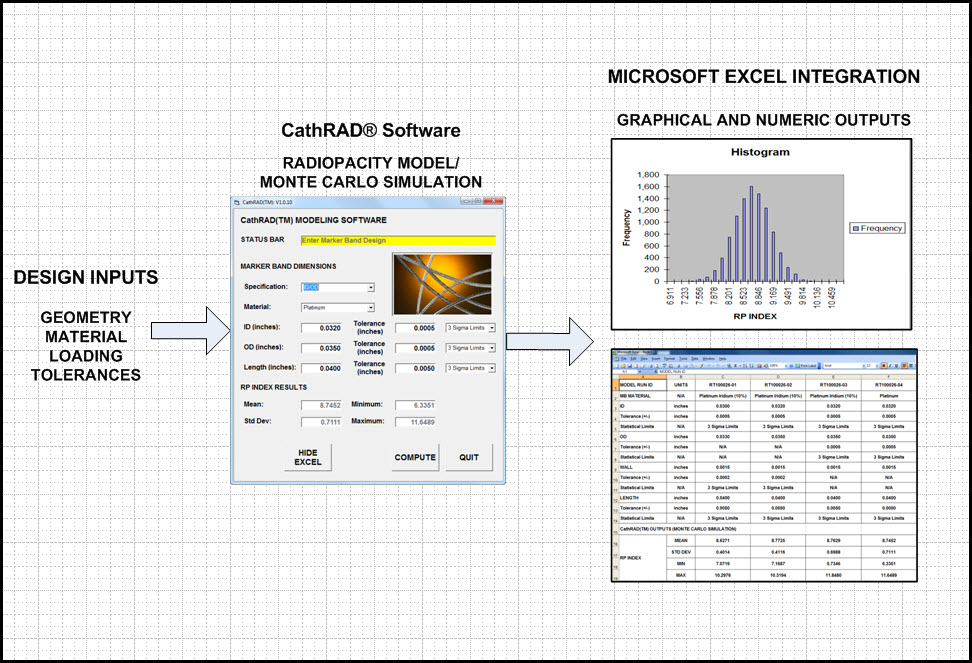CathRAD® is the first commercially available software to predict and analyze the visibility of catheter marker bands under fluoroscopy.
- Fluoroscopy is an imaging technique that uses X-rays to obtain real-time moving images of the internal structures of a patient through the use of a fluoroscope.
- Radiopaque marker bands are thin-walled metal tubes placed at strategic locations on a catheter for visibility under fluoroscopy and are typically made from a high density metal such as platinum, gold, or tantalum.
- Doped extrusions formulations including Barium Sulfate, Bismuth Subcarbonate, Bismuth Oxychloride, Bismuth Trioxide, and Tungsten.
CathRAD® will allow you to understand and quantify the effects of marker band material, geometry, and part tolerances on the visibility of the marker band and extrusions in the catheter design.

CathRAD® Process Flow: CathRAD® computes an RP Index for a particular design configuration. The results are exported to MS Excel by selecting the EXPORT button.
RP INDEX
The CathRAD® software computes a radiopaque index (RP INDEX) based on the following design inputs:
- Marker Band Material
- Material Loading (0 to 100 percent) for applicable materials
- Geometry
- Part Tolerances
Since the marker band has variations from part to part due to manufacturing tolerances, the software uses a built-in Monte Carlo Simulation Engine to compute the marker band’s mean, standard deviation, and min/max RP INDEX visibility. The resulting data is seamlessly exported to MS Excel in both numeric and graphical formats.